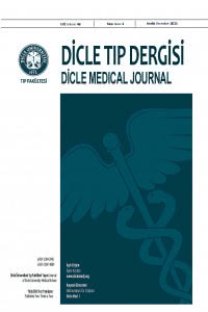Exploring the Effects of Lucilia sericata Larvae on Biofilm-forming Bacteria in Wounds
Biofilm, chronic wound, Lucilia sericata, larvae, bacteria
Exploring the Effects of Lucilia sericata Larvae on Biofilm-forming Bacteria in Wounds
Biofilm, chronic wound, Lucilia sericata, larvae, bacteria,
___
- 1. Olsson M, Järbrink K, Divakar U, et al. The humanistic and economic burden of chronic wounds: A systematic review. Wound Repair Regen. 2019; 27(1): 114-25.
- 2. Mihai MM, Preda M, Lungu I, et al. Nanocoatings for Chronic Wound Repair-Modulation of Microbial Colonization and Biofilm Formation. Int J Mol Sci. 2018; 19(4): 1179.
- 3. Rahim K, Saleha S, Zhu X, et al. Bacterial Contribution in Chronicity of Wounds. Microb Ecol. 2017; 73(3): 710-21.
- 4. Daeschlein G. Antimicrobial and antiseptic strategies in wound management. Int Wound J. 2013; 10 Suppl 1(Suppl 1): 9-14.
- ISSN: 1300-2945
- Yayın Aralığı: 4
- Başlangıç: 1963
- Yayıncı: Cahfer GÜLOĞLU
Exploring the Effects of Lucilia sericata Larvae on Biofilm-forming Bacteria in Wounds
Merve EGRİBEL, Serhat SİREKBASAN, Hüseyin ÇAKAN, Erdal POLAT
Tugba ARSLAN GÜLEN, Ayfer İMRE, Taylan BOZOK
Barış YILBAŞ, Fatmaelif YILDIRIM
Ilker ODEMİS, Elif VURAL TASDEMİR
Otizm ve Oksidatif Stres: Bir Vaka Kontrol Çalışması
Fatma SUBAŞI TURGUT, Mehmet KARADAĞ, Seyithan TAYSİ, Zehra HANGÜL, Cem GÖKÇEN
Miyokard Enfarktüsü Hastalarında Nesfatin Düzeyi ve NesfatininTroponin ve CRP ile Korelasyonu
Mehmet Şahin ADIYAMAN, Revşa Evin CANPOLAT ERKAN, İlyas KAYA, Özlem ABA ADIYAMAN
Relationship Between Systemic Immune Inflammation Index and Prognosis in Patients with COVID-19
